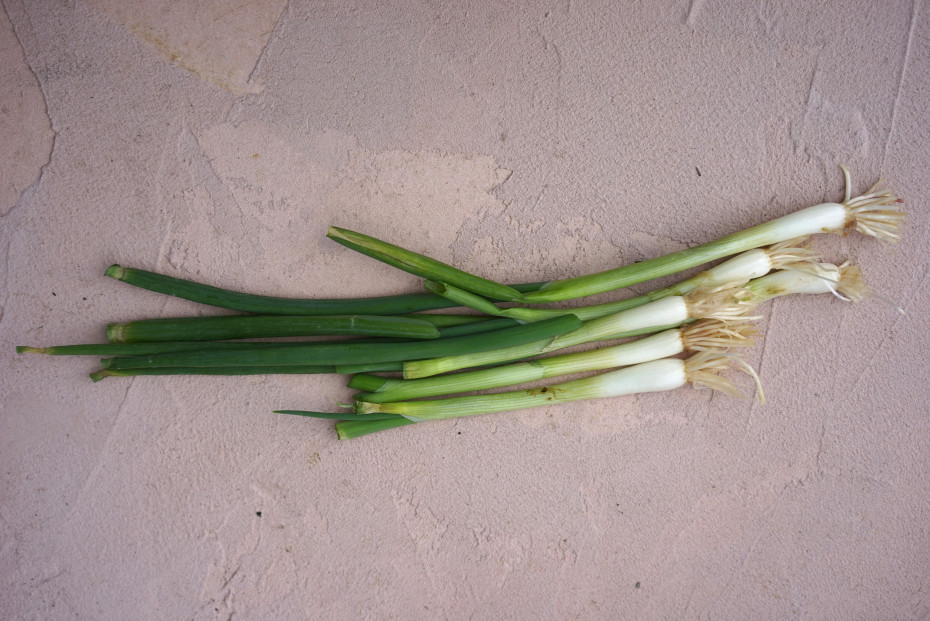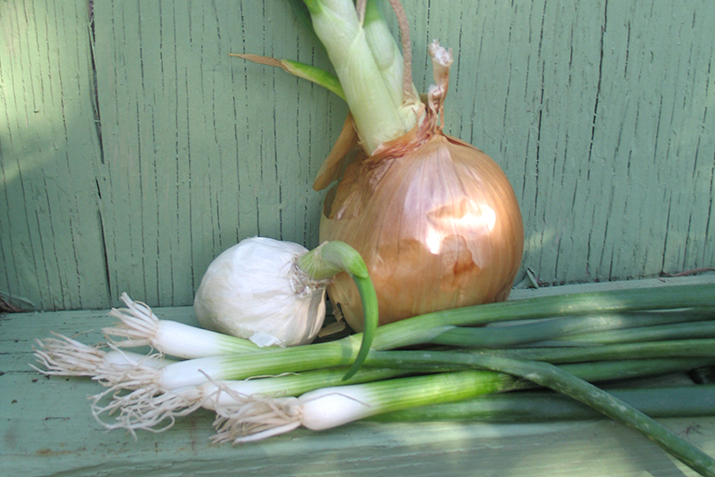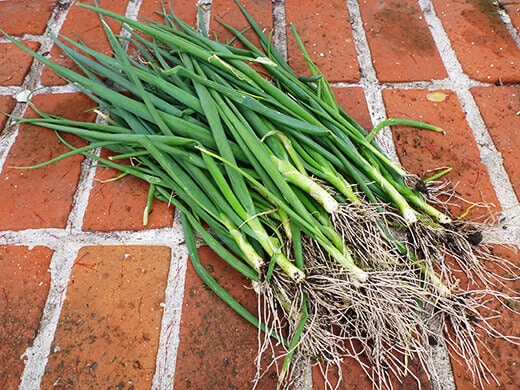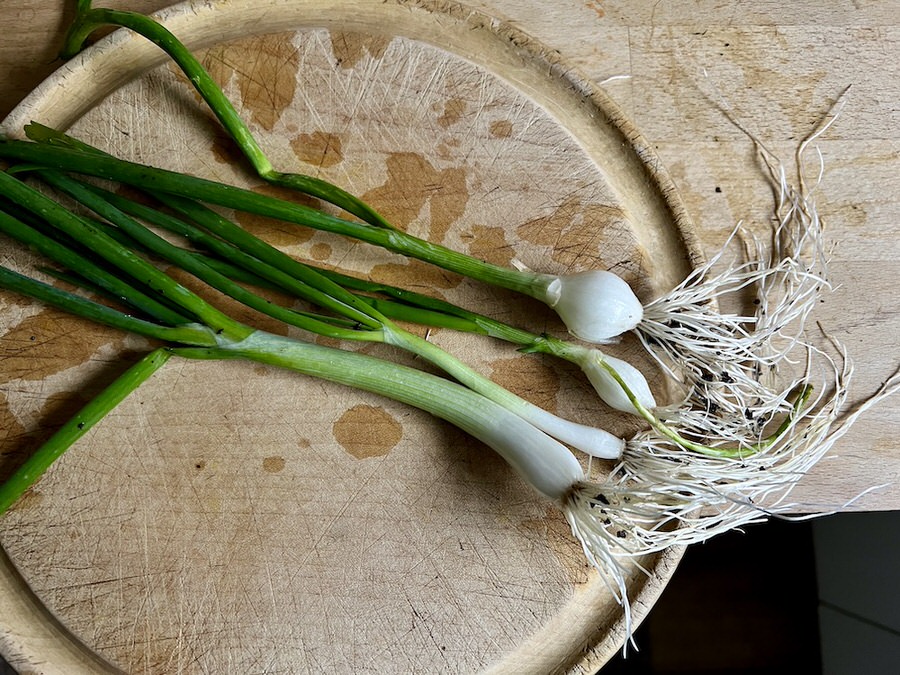Green onions, also known as scallions or spring onions, are one of the easiest, most versatile vegetables to grow at home. Their crisp texture, mild onion flavor, and ability to enhance everything from soups to stir-fries make them a kitchen essential. Best of all, green onions grow quickly, don’t require much space, and can thrive indoors or outdoors.
Whether you’re a beginner gardener with little experience or someone looking to grow a reliable, low-maintenance crop, scallions are a perfect choice. This article will guide you step-by-step through how to grow green onions at home—from choosing the right type and planting methods to caring, harvesting, and regrowing them for a continuous supply.
Why Grow Green Onions at Home?

Growing your own scallions has multiple benefits:
- Fast-Growing Crop – Unlike many vegetables that take months, green onions can be ready to harvest in just 3–4 weeks.
- Space-Saving – They grow well in pots, containers, or small garden beds, making them ideal for urban gardening.
- Low Maintenance – Scallions need minimal care compared to other vegetables.
- Regrowth Potential – You can regrow green onions from kitchen scraps, saving time and money.
- Fresh Supply – Homegrown scallions taste fresher, are pesticide-free, and are always available when you need them.
Step 1: Choosing the Right Type of Green Onions

Green onions come in several varieties, and selecting the right one depends on your preference:
- Evergreen Bunching Onions – Perennial type, perfect for continuous harvests.
- White Lisbon – Popular for its mild flavor, grows quickly, and is great for beginners.
- Tokyo Long White – Produces tall, slender scallions often used in Asian cooking.
- Ishikura – A Japanese bunching variety that never forms bulbs, ideal for long white stems.
For home growing, bunching onions are the best choice since they can regrow and don’t require replanting often.
Step 2: Preparing the Soil and Containers
Green onions thrive in well-drained, fertile soil rich in organic matter.
- Soil pH: Slightly acidic to neutral (6.0–7.0).
- Amendments: Mix compost or well-rotted manure into the soil for healthy growth.
- Texture: Loose, crumbly soil ensures easy root development.
If planting in containers:
- Choose a 6–8 inch deep container with good drainage holes.
- Use a quality potting mix combined with compost.
- Ensure the container receives plenty of sunlight.
Step 3: Planting Green Onions

There are three main ways to grow green onions at home:
1. From Seeds
- Sow seeds ¼ inch deep and 1 inch apart.
- Cover lightly with soil and mist with water.
- Keep the soil moist until germination (7–14 days).
2. From Bulbs (Sets)
- Purchase onion sets (small bulbs) from a nursery.
- Plant them 1 inch deep and 2 inches apart.
- They establish faster than seeds and produce quicker harvests.
3. From Kitchen Scraps
- Save the white root ends of store-bought scallions.
- Place them in a glass of water with roots submerged.
- After 5–7 days, green shoots will regrow.
- Transplant them into soil for continuous growth.
Step 4: Sunlight and Water Requirements

- Sunlight: Green onions need at least 6 hours of direct sunlight daily. Indoors, place pots near a sunny windowsill or use grow lights.
- Watering: Keep the soil evenly moist but not soggy. Water deeply 2–3 times per week depending on climate. Container plants dry out faster, so check soil frequently.
Step 5: Fertilizing for Healthy Growth
Green onions are light feeders but benefit from occasional nutrition:
- Use a balanced fertilizer (10-10-10) every 3–4 weeks.
- For organic options, apply compost tea, fish emulsion, or diluted seaweed extract.
- Avoid excessive nitrogen, which may cause thin, weak leaves.
Step 6: Caring for Green Onion Plants

- Weeding – Remove weeds regularly to prevent competition for nutrients.
- Mulching – Apply straw or dry leaves around plants to retain soil moisture.
- Pest Control – Watch out for onion thrips, aphids, and onion maggots. Neem oil or insecticidal soap works well for natural pest control.
- Disease Prevention – Ensure proper spacing for airflow to prevent fungal diseases like downy mildew. Avoid overhead watering.
Step 7: Harvesting Green Onions
One of the best parts about growing scallions is how quickly you can enjoy them.
- Early Harvest: Within 3–4 weeks, you can start cutting the green tops for use in dishes.
- Full Harvest: After 6–8 weeks, pull the entire plant when the stalks are pencil-thick.
- Continuous Harvest: Instead of pulling the whole plant, cut leaves about 1 inch above the soil. They will regrow multiple times.
Pro Tip: Harvest in the morning for the freshest flavor.
Step 8: Regrowing Green Onions
Green onions can regrow multiple times after harvesting:
- Leave the white root base in the soil.
- Water regularly, and new shoots will appear within a week.
- This method allows you to enjoy multiple harvests from a single planting.
Alternatively, keep roots in a glass of water on your kitchen counter for quick regrowth. Change the water every 2–3 days.
Step 9: Growing Green Onions Indoors Year-Round
Green onions are perfect for indoor gardening. With the right conditions, you can enjoy fresh scallions year-round:
- Use containers or hydroponic systems.
- Place pots near south-facing windows for maximum sunlight.
- Supplement with LED grow lights during winter or in low-light spaces.
- Ensure good air circulation indoors to prevent mold or rot.
Culinary Uses of Green Onions
Green onions are not just easy to grow but also incredibly versatile in cooking:
- Soups and Stews: Adds mild onion flavor without overpowering.
- Salads: Freshly chopped scallions enhance green salads and potato salads.
- Stir-Fries: A key ingredient in Asian cuisine for both flavor and garnish.
- Egg Dishes: Perfect for omelets, scrambled eggs, and quiches.
- Herbal Butter or Dips: Mix with cream cheese or butter for spreads.
Both the white base and green tops are edible, offering different intensities of flavor.
Common Mistakes to Avoid
- Overwatering – Leads to root rot; keep soil moist, not soggy.
- Crowded Planting – Reduces airflow and increases disease risk.
- Neglecting Sunlight – Causes thin, weak shoots.
- Using Heavy Soil – Poor drainage stunts growth.
- Pulling Instead of Cutting – Cutting allows regrowth; pulling ends the plant’s cycle.
Health Benefits of Green Onions
Aside from their culinary uses, green onions are nutrient-rich and beneficial for health:
- Rich in Vitamin C – Boosts immunity.
- High in Vitamin K – Supports bone health.
- Antioxidants – Helps reduce inflammation.
- Low-Calorie, High-Fiber – Great for digestion and weight management.
- Heart-Healthy Compounds – May help regulate blood pressure.
Conclusion
Green onions, or scallions, are one of the easiest and most rewarding crops to grow at home. With minimal effort, a small amount of space, and simple care, you can enjoy fresh, flavorful onions year-round. Whether you’re regrowing them from scraps on your kitchen counter or cultivating them in containers or garden beds, scallions provide a sustainable, cost-effective, and delicious addition to your meals.
By following the steps outlined—from seed or bulb selection to care, harvesting, and regrowth—you’ll always have a fresh supply of green onions on hand. For beginners and seasoned gardeners alike, growing scallions is a simple yet fulfilling way to bring farm-fresh produce into your home.
So, grab a pot, some soil, and a few onion roots, and start growing your own green onions today—you’ll be surprised at how quickly you’ll be snipping fresh scallions for your next dish!




Leave A Comment